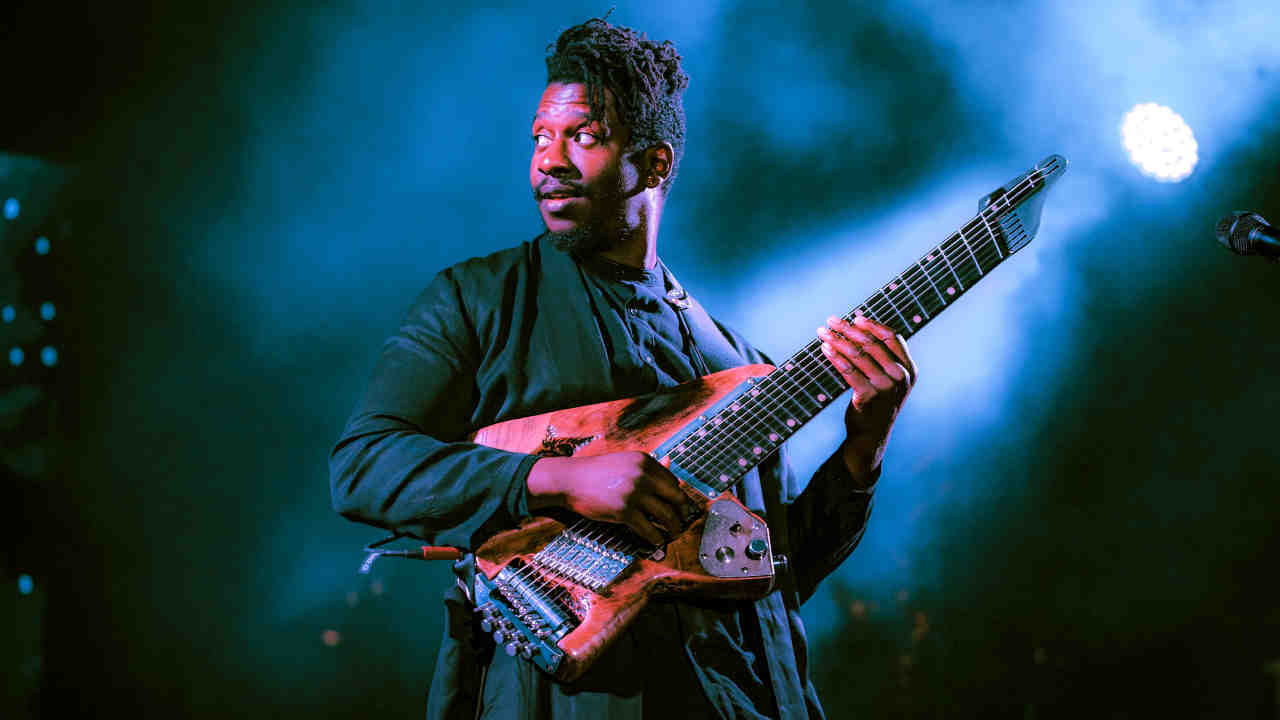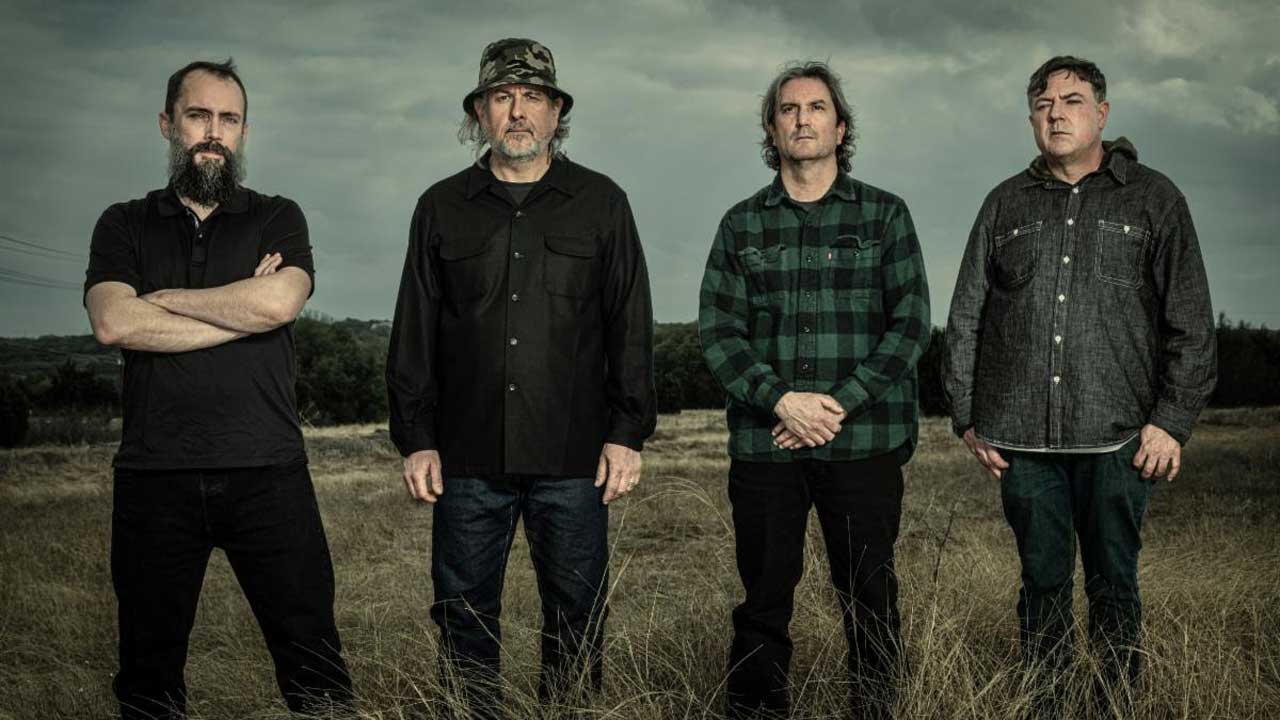11 awe-inspiring non-metal guitarists who will blow every metal fan’s mind
Animals As Leaders guitar wizard Tosin Abasi on the six-string visionaries that every metal fan should know about

Tosin Abasi never meant to be a next-level guitar hero when he was starting out as a kid. “I was into Nirvana, Pearl Jam and Soundgarden,” says Animals As Leaders’ octopus-fingered guitar virtuoso. “I’d see Guns N’ Roses or Van Halen, but I was just trying to play my favourite Nirvana songs.”
That changed when he started getting into six-string dons such as Joe Satriani and Steve Vai, which eventually led him into a whole other world of guitar genius. “It’s like, ‘Oh, there's this whole other tier of guitarists that you don’t hear on the radio. I became obsessed learning these advanced guitar techniques.”
His obsession paid off. Today, Tosin is pushing back the boundaries of prog-metal with Animals As Leaders, who’s new album Parrhesia is out now. We prised his nine-string guitar out of his hands for long enough for him to talk us through the 11 non-metal guitarists that will melt every metal fan’s mind.

Allan Holdsworth
“Allan Holdsworth was a fusion guitar player and as far as that school goes, he’s one of the critical players who was credited with defining the sound in a lot of ways. He essentially used legato exclusively and was known for phrasing that was more similar to a horn player than what you’d usually get from a guitar.
He was famously envious of horn players in ways, so his style isn’t always guitar-like but the result is always something really unique and beautiful. He had insane, awe-inspiring chops.”
Jonathan Kreisberg
“Jonathan Kreisberg is a jazz guitarist who I’m pretty sure has some shred in his past – he just evolved to become a straight-ahead jazz player. He’s cool because he’s got all the chops that shred guys like, but his use of harmony and phrasing, his polyphonic work and ability to compose interesting tunes is incredible. He even has a solo release out that is literally just guitar, which is one of the hardest things to do.”
Yamandu Costa
“Yamandu Costa is a Brazilian nylon string guitarist who plays a classical seven string guitar. He’s got chops that rival [virtuoso flamenco guitarist] Paco De Lucía as far as picking speed and clarity goes. It’s just staggering.
Sign up below to get the latest from Metal Hammer, plus exclusive special offers, direct to your inbox!
In metal, shredding is all about guitar solos or moments where the guitar is in focus, but with guys like Yamandu Costa he’s basically creating a mini-symphony on the guitar. He’s responsible for the chordal playing as well as the bass lines and there’s these bursts of speed, all being done on a single instrument without the benefit of a band. It harkens back to the classical era of playing an instrument virtuostically.”
Andre Nieri
“Andre Nieri is maybe a little closer to metal than a lot of the other people on this list. He’s a rock guy and is astounding. I’ve watched him play solos and just sat there thinking ‘that is perfect guitar playing’.
The amount of passion, the use of vibrato and bends – everything about him strikes me as him being one of the most developed electric guitar players. He’s got a rich background – he can play Bossa nova and has this chordal harmony thing that is part of his repertoire, but on the electric guitar you’d be hard-pressed to find something more impressive.”
Ben Eunson
“Ben Eunson is another fusion player who sounds like they’ve transcribed a tonne of John Coltrane and Michael Brecker because his lines don’t sound like your traditional note selection on the guitar – he’s somehow escaped a lot of that. He’s blown sound wide open.
In the past few years I’ve been noticing more guitarists through Instagram, like Ben Eunson. He has two albums out so far and is very active on social media. The platform of social media allows a window into a player that might be one minute long, but expose you to millions of people. If you are very gifted in the realm of technique, that value is perfect for bite-size chunks.”
Antoine Boyer
“What Antoine Boyer can do as a single player on the guitar is really fantastic. His counterpoint, two-voice thing is really difficult and he’s really great at that.”
Kurt Rosenwinkel
“I’m a huge Kurt Rosenwinkel fan. I wouldn’t necessarily say he’s the master of jazz fusion, but with jazz because its such a fixed tradition there’s a degree of emulation because its part of the language. If you want to play jazz, you’re not going to have your wah and distortion pedals, you’re not going to be doing a bunch of two-finger tapping.
Instead, you’re going to learn bebop, you’re going to learn Charlie Parker and you’ll learn the vocabulary of bebop. What that does is, it creates a generation of players who honour the tradition. Then you get players who somehow cut against that and have a sound which is more individual – Kurt Rosenwinkel’s The Next Step is one of those. I love the harmonies, the compositions and he has a very distinct musical voice.”
Gilad Hekselman
“Gilad Hekselman plays with a maturity and type of consideration that is so hard to achieve. Its so mature and he can play these delicate compositions, but is also really great at counterpoint, using two voices at once. He can even improvise that way.
Its not the type of playing where you’re like ‘holy shit that was so fast’, but the thing is that he can do that if he wanted to. The value is in how very considered and delicate, making beautiful use of harmony and multiple voices.”
AJ Ghent
“AJ Ghent is a slide player. He got started playing in church, playing gospel. His use of slide is heavily influenced by R&B female vocalists like Mariah Carey. He actually can emulate a lot of that vocal inflection with the slide. The moment he starts playing, you just stop.”
Lionel Loueke
“Lionel Loueke is a guitarist from Benin, he’s a West African guitar player. He plays with Herbie Hancock but has his own releases. This guy is one of the most unique guitar players around; he imitates talking drums by using a whammy pedal. He beatboxes, but not like a hip-hop beat. He does this metric modulation where he’ll be beatboxing at one tempo and then he will fluctuate his guitar playing in this elastic way that makes it seem like it is speeding up and slowing down.
He also does these things where he will string his guitar, treat it like a treated guitar, like how a pianist would on a treated piano with string or felt against the keys. He puts paper under the strings at the bridge to modify the sound and is able to get some really cool non-guitar sounds from it. Plus he’s in Herbie Hancock’s band, so he’s capable of playing straight-away bebop beautifully, but has this whole cultural level on top of his playing.”
Adam Rogers
“Adam Rogers is a jazz guitarist who also has a classical guitar background. I think he actually studied classical guitar at university, but writes modern jazz. His use of harmony and use of symmetrical scales has been a huge, huge influence on me.”
It’s a really colourful use of harmony – a lot of it is to do with tension. He’s very masterful and has a distinct, individual voice and is one of my favourites.”
Animals As Leaders’ new album Parrhesia is out now
